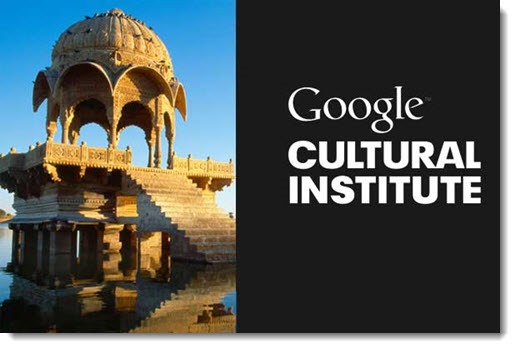Google is an advertising company. Roughly 95% of its revenue comes from displaying ads on web pages. But it spends large resources on projects that are genuinely good for the world, even if they don’t directly make money. The Google Cultural Institute is one of those projects that I had missed in the five years since it was launched. Bookmark it and visit when you can spend a few hours getting lost in the wonders of the world.
Our knowledge of world treasures has always been limited. You can read about an artwork, you can see photos taken inside a famous museum, but fully immersing yourself in museums and historical landmarks has always required visiting them in person, a geographical limitation that makes it difficult to embrace art and culture in all its richness.
Google Cultural Institute brings entire museums to your screen – the experience of walking through the museums using a modified version of Street View, plus detailed views of the paintings, records, artifacts, and other objects on display. Last week Google Cultural Institute announced that more than a thousand museums and cultural institutions are now online. The collection includes far more than museums. You can visit historic landmarks, watch performances, see special exhibits, look through historical records, and oh so much more.
Walk down the spiral ramp at the Guggenheim Museum in New York. Step onstage during a performance at the Paris Opera, or watch a rehearsal of Beethoven’s Symphony No. 9 by the Berliner Philharmoniker. Look through the core work of the Nelson Mandela Foundation. Wander around in Macchu Picchu. Zoom in on paintings at the New York Metropolitan Museum of Art and look at Van Gogh’s brush strokes. Stroll around the Taj Mahal. Go underwater and use the same Street View navigation to scuba dive in the Great Barrier Reef. The collection is vast and constantly growing.
Google Cultural Institute has absorbed all the ultra-high resolution images originally scanned for Google Art Project, originally a separate initiative. Tens of thousands of paintings and art objects can be examined down to a nearly microscopic level, frequently with additional information ranging from historical and viewing notes to audio and video guides.
The mind boggles. Dive in! If you’re not sure where to start, here’s an article that picks out fifteen interesting places to visit, from Jungfrau in the Swiss Alps to the National Portrait Gallery. Explore the world!



Thanks for sharing this, Bruce. I spent just a few minutes visiting a few sites this evening. Exceptional!